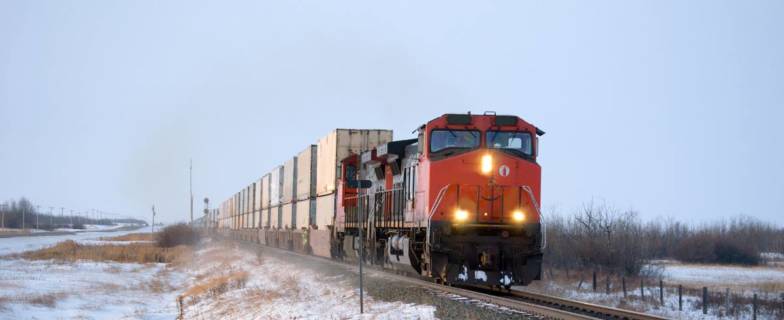Why It Matters to You Whether Your Locomotive is “In Use” When You Suffer an On-Duty Injury
*The Supreme Court Will Decide the Issue Later This Year
Imagine that a freight train travels on the mainline from Point A to Point B and stops in a rail yard for a crew change and to switch a few railcars before transport continues. The railroad procedures require that you power off two of the three locomotives at the head end of the train to save fuel. While on a sidetrack in the yard, you walk through the cabs of the first two locomotives and attempt to cross over to the third before placing a tag and turning it off. But, before you get there, you slip and fall, at nighttime, on what you discover was an oil slick. It is later determined that this locomotive had not been inspected during the three days leading up to this incident. You require multiple surgeries and cannot return to work. You think it is a slam dunk of a case only to have a judge dismiss it because he determines that the locomotive was not “in use” at the time of the incident and that the oil may have accumulated while the train was in transit.
This is exactly the situation in which Bradley LeDure found himself when he made a claim against Union Pacific for on-duty injuries he suffered in 2016. We filed a lawsuit, claiming that Union Pacific violated federal law when it failed both to keep its locomotive free of slipping hazards and to properly inspect the locomotive. The railroad argued a technicality: because the locomotive was not “in use” at that time, the safety regulation did not apply. Surprisingly, the court accepted this argument and dismissed the case. We have been fighting ever since to correct this wrong decision.
Indeed, most courts addressing the question have adopted the expansive view that a locomotive is “in use” as long as it is not located in a place of maintenance or repair, such as a roundhouse. For example, one court found that a railcar was “in use” when it was idling in a railyard, even if the train was not fully assembled.
Another found that that a locomotive was “in use” even though it had been uncoupled from railcars and sat motionless in the switching yard, since it was scheduled to be used when additional railcars arrived. Yet another court found that a locomotive or railcar is ”in use” almost any time it is not stopped for repair.
However, a few other courts have taken a restrictive view of when a locomotive is “in use.” One court determined that a locomotive was not “in use” until the train’s inspection had been completed. Another found that a locomotive was not “in use” unless it was actually moving. We argued that these decisions were inapplicable because the facts were different in important ways from the facts of LeDure’s case, but the court disregarded those objections and dismissed the case nonetheless.
In situations like these, where we believe a court has wrongly decided an issue of law, we have the right to appeal the decision to a higher court and to correct the lower court’s error. After this court refused to reverse the decision, we faced extremely poor odds in getting the highest court—the United States Supreme Court—to accept the case for review. That court only accepts about 1% of all cases presented to it. But, we thought it was worth the fight, not just for Brad LeDure, but for thousands of other train workers throughout the country on Class I and shortline railroads whose rights will be affected by this case. So, we filed a petition for the Supreme Court to accept the case. In response, the Court asked the U.S. government to weigh in with the views of the FRA and the Department of Labor. This is also uncommon. Fortunately, the U.S. government filed a brief supporting our position and the Court decided to accept the case—a remarkable achievement alone, given the long odds. The BLET and SMART-UTU also filed briefs in support of LeDure. It is expected that the railroads will join together in opposition. The case is now scheduled for oral argument on March 28, 2022. Fortunately, Schlichter Bogard & Denton have a track record of success in the Supreme Court, having won their last two cases there, including this past January, in another case on behalf of workers. This unique fight in the highest court is another example of how we fight hard to represent working Americans against big businesses. Stay tuned for more news in the near future.



